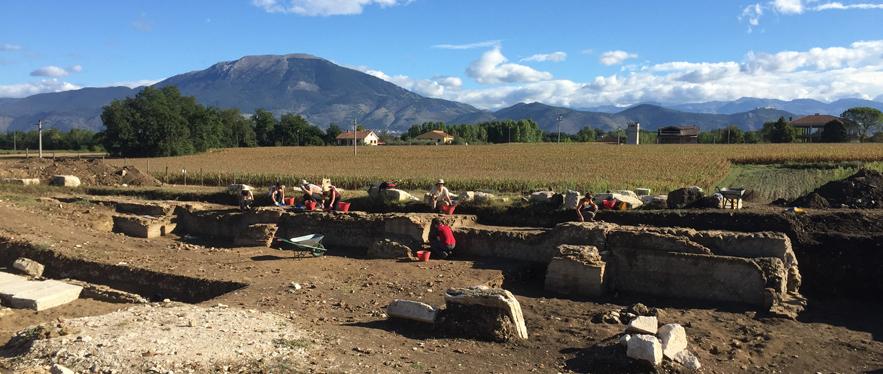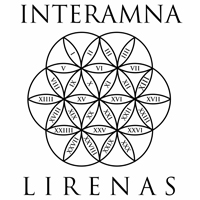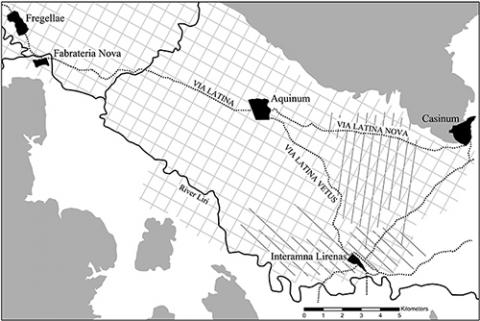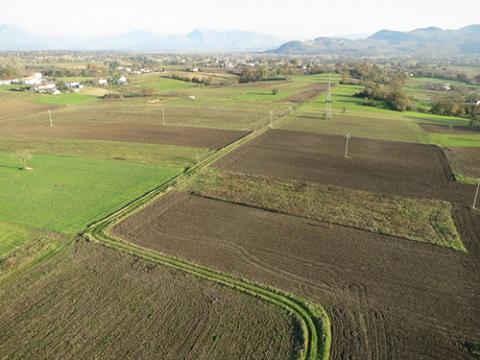
 A Roman town and its hinterland
A Roman town and its hinterland
Since 2010 the Roman town of Interamna Lirenas and its hinterland (Central Italy) have been the object of an integrated fieldwork project involving geophysical prospection, field survey and excavation. This research programme is especially interested in the long-term relationship between town and countryside as reflecting the broader transformations taking place in Roman Italy from Republic to Empire.
A little history
The Roman town of Interamna Lirenas was founded in 312 BC in the territories formerly owned by the communities of Aquinum (Aquino) and Casinum (Cassino). The name Interamna (from the Latin inter amnes, "between rivers") reflected its topographic situation, whereas the adjective Lirenas ("on the Liris") signalled its geographic location.
Originally created as a Latin colony (formally independent from Rome, but bound by a close military and political alliance), the town was located at the intersection of two important communication routes: the via Latina (linking Lazio and Campania) and the course of the river Liris (linking the hinterland with the Tyrrhenian coast). Its origins lay in the Romans' military operations against the Samnites, part of their broader process of expansion across central-southern Italy (late 4th - early 3rd c. BC).

Urban settlement, road network and field systems in the ancient Liri Valley (dark grey = areas over 200 m ASML)
Once Rome had firmly established her hegemony over the region, the colony further developed its civic dimension, until, eventually, its citizens were granted full Roman citizenship and the town was made a municipium (1st c. BC). Not long after, probably at the same time as he was settling his own veteran soldiers in this territory, Julius Caesar was made a 'patron' of the community (patronus municipii).
Benefitting from its position at the intersection of important communication routes, Interamna became a node within an articulated network of periodic markets (nundinae), extending from Rome to as far as Apulia. Together with agriculture and animal husbandry, trade activities brought wealth and prosperity to its inhabitants.
Interamna's later history appears to have been rather uneventful, until its final abandonment in the course of 6th c. AD, probably in relation to the Lombard invasion of Italy.
An invisible town
Today the site of Interamna features a series of cropfield that provide relatively little hint of the presence of an ancient settlement. This results from the fact that, once the town was abandoned, its own inhabitants started a process of systematic spoliation, salvaging building materials to be re-used elsewhere (most prominently, albeit not exclusively, in neighbouring farms). Furthermore, local farmers eventually endeavoured to turn the area into an arable surface, spreading a thick layer of dirt and debris over what was left of the town (buried structures are in fact little preserved above the floor level). The introduction of mechanized deep-ploughing in the second half of the 20th century has significanlty damaged the buried archaeology, but it has also brought to the surface a great number of debris and potsherds, for long the most visible signs of the presence of the ancient city underneath.

Aerial view of the site of Interamna Lirenas (photo courtesy of G. Murro)
These fragmentary data provided the base for the pioneering studies carried out by the Italian archaeologist Michelangelo Cagiano de Azevedo (1947) and by the Canadian team from McMaster University led by the late Edith Mary Wightman (1978-83), which for long have represented the main body of knowledge about Interamna Lirenas and its territory.
Our research
In 2010 the Faculty of Classics of the University of Cambridge (Alessandro Launaro and Martin Millett), in collaboration with the British School at Rome, the Italian Soprintendenza Archeologica (Giovanna Rita Bellini) and the Comune di Pignataro Interamna, started a broad programme of archaeological research aimed at extending our knowledge of the Roman town and its territory.
Our integrated fieldwork has involved the following activities:
- 2010-12: full-coverage geophysical survey (magnetometry) over the entire urban area (originally part of the Roman Colonial Landscapes project);
- 2010-13: intensive field survey across Interamna's hinterland (until 2012 part of the Roman Colonial Landscapes project);
- 2012-13: geophysical survey (ground-penetrating radar) over limited sectors of the urban area (in 2012 as part of the Roman Colonial Landscapes project);
- 2013- : excavation of the theatre near the forum of the town;
- 2015-17: full-coverage geophysical survey (ground-penetrating radar) over the entire urban area, in collaboration with the University of Gent (part of the Beneath the Surface of Roman Republican Cities project)
- 2019- : excavation of the basilica along the forum of the town.
All these activities are closely integrated with a thorough and timely analysis of all finds under the supervision of Ms Ninetta Leone. Dr Claudio Capelli (Università degli Studi di Genova) provides further specialist support in the analysis and study of pottery fabrics.
Periodical reports on our research activities have been published in the Lazio e Sabina conference proceedings series (in Italian) and in the Papers of the British School at Rome (in English) (see our project's publications).
Acknowledgements
This research project has benefitted from the very generous support of various institutions and we wish to express our deepest gratitide to: the Faculty of Classics of the University of Cambridge, the Comune di Pignataro Interamna, the Soprintendenza Archeologia, Belle Arti e Paesaggio per le Province di Frosinone e Latina, the British School at Rome, the Arts and Humanities Research Council, the Isaac Newton Trust, the McDonald Institute for Archaeological Research, the British Academy and the Leverhulme Trust.
We also wish to thank all those students of the University of Cambridge who, over the years, have taken part in our fieldwork: their enthusiasm and sincere commitment made it a truly memorable experience.
Contacts
Alessandro Launaro
Faculty of Classics, University of Cambridge
Sidgwick Avenue
Cambridge CB3 9DA
UK
Tel: +44 (0)1223 761004
Email: al506@cam.ac.uk
